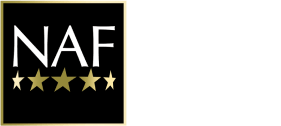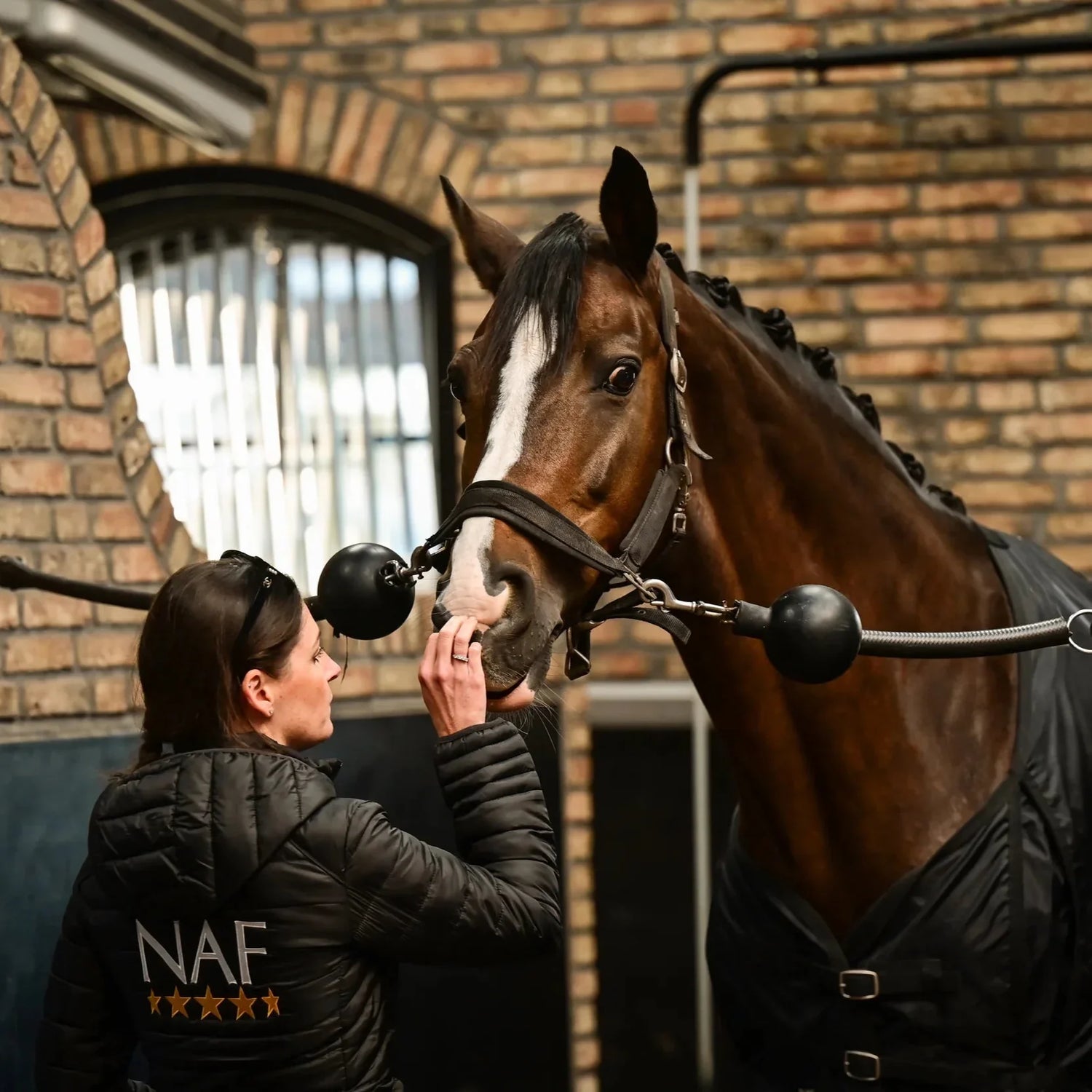Keeping her comfortable, focused and ready to bring her Girl Power!
For those of us lucky enough to own a mare, we know we have something special, but with that comes a responsibility. We need an understanding of her natural oestrus cycles, so we can help her stay comfortable and focused, whilst still bringing that unique ‘girl power’ to your riding.
The Natural Mare
Like stallions, mares are ‘entires’, not castrated as geldings are, and whilst there are advantages to that, it can also mean she is at the mercy of her hormones.
Her oestrus cycle
Mares are described as seasonally polyestrous, meaning she has multiple heat cycles at certain times of the year – for horses, that is spring through to early autumn. Most mares will have entered a non-breeding period over winter, known as anoestrus or anovulatory, but then enter the spring transition period where her cycling restarts. It is wise to be prepared for this change, as often the earliest cycles during this period can be particularly erratic and extreme - you could say her hormones literally ‘kick-start’ in Spring!
Once her cycles settle into a seasonal routine they should follow a roughly twenty one day cycle, split into two different clear sections. Oestrus lasts four or five days and is the time that she is sexually receptive. Mares may flirt more with the geldings during this time, and certainly if there are stallions or colts on the yard be sure that there is no unplanned contact between them. Oestrus is followed by around sixteen days of Dioestrus, when naturally mares would reject the stallion, and behaviour may be more dominant or pushy during this time.

Alpha mares
Naturally the herd would have one, or several, ‘alpha mares’. These are the leaders, and whilst stallions may come and go, the alpha mares are in charge. She is not necessarily the strongest or oldest, but hierarchy is based on experiences, time in the herd and genetic influences. There is a well known saying in the equine world:
‘Tell a gelding, ask a mare, discuss it with a stallion’
Though some would say that tactful ‘discussions’ are definitely just as appropriate to mares as to stallions. However, on the plus side, if you have an alpha mare you know you have a strong-willed, determined individual on your side.
Tip: Observe your mare in her herd, such herd mate interactions, to understand where she is in the hierarchy. Click here for more information about equine hierarchy.
Modern mares and their hormones
As horse owners, we ask mares need to fit their monthly cycles into their lives as modern, domesticated horses. Therefore, it is important that we recognise those challenges and help her as much as possible.
It is worth noting that signs of seasonal cycling differ with the individual and are split into two clear groups. To be confident it is her hormones that are the issue look for mare specific behaviour. These signs are most typically seen in hormonal mares, giving you a very good indication that the behaviour is hormone related. Non-mare specific signs may also be seen but could also relate to many other triggers. If you are only seeing the non-specific signs, it is important to get tack fit and teeth checked, and a check from your vet to rule out other causes.
Mare Specific behaviour:
- Increased urination
- Mating stance with wider back legs
- Frequent squealing / vocalisation
- Raised tail / vulvar ‘winking’
- Separation anxiety from other horses
Non-Mare specific behaviour:
- Aggression / change in behaviour
- Kicking and bucking
- Discomfort, i.e. ‘cold-backed’
- Sensitive to touch
- Poor performance / reluctance to work
If you see signs of hormonal stress in your mare how can you help her?
A stable herd
Minimise any changes to her herd – both horsey and human. Your mare and her field companions will establish their own hierarchy, and that is generally maintained peacefully once established. Try to minimise changes and introduce any new member carefully. She will also appreciate consistency in carers, whether that is down to you or livery yard staff, try to keep it constant.
Be season aware
Be mindful to her seasons, particularly practicing considerate grooming over her back and quarters.
Turn that light out!
The Spring and Autumn seasonal changes are dictated by day length. Indeed, in the Thoroughbred industry the use of artificial daylight over winter is used to bring forward their natural breeding season.
Consider your stable lighting. For example, an enclosed American Barn style stabling, where the lights may be on for extended periods, could be artificially ‘tricking’ your mare’s system into believing it is summer all year round. This is just one of the reasons we see more mares exhibiting oestrus changes at any time.
Nutrition for hormonal balance
Body condition and behaviour
Do look at her overall diet and condition. In early spring, our horses should be in a healthy body condition score, as winter is an ideal time to lose those excess pounds which may have crept on. Body Condition Score your mare regularly to check her weight. Not only is this important for general health and immunity, but also specific to her oestrus cycles and behaviour.
Research shows that overweight horses are more dominant, but it is interesting to ask why. We might assume that dominant animals in a herd will get more food, and so gain weight. However, that cause and effect hasn’t been established, and cross-species evidence suggests a clear link between excess weight and aggression and pain, both generally and specific to hormonal cycling. Research also shows that overweight mares continue to cycle for much longer in the year, in to the typical non-breeding season. To avoid that keeping a healthy weight is imperative.
Therefore, it makes sense to monitor her weight closely, restricting intake if necessary, to ensure your mare stays at a healthy weight. Keep a particular close watch for the spring flush of grass growth, which can mean unwelcome weight gain.
Supplementary nutrition just for mares
Did you know? The traditional name of herbs often tells you their action.
Chasteberry – pure and chaste
Crampbark – for premenstrual cramps
For targeted support, the tradition of herbal blends goes back for millennia and are often a great choice for providing natural effective support. It is worth remembering that her cycles and the issues she’s dealing with are complex and therefore require a complex solution – a single herb, no matter how good, is rarely the answer.
Chasteberry is a useful ingredient, helping to suppress libido, keeping her focused on her job, and not chasing the geldings! However, it only looks at the temperament, and so cannot help her with the fundamental issue, at the bottom of a lot of behaviour changes, and that is seasonally related discomfort. To help our mares we also need to manage their comfort, and this is where herbs like Crampbark and Black cohosh come in due to their recognition for relieving pains associated with PMS in women, and seasonal discomfort.
These herbs work in synergy with magnesium for nerve balance as a natural calmer, and to aid anti-inflammatory reactions around painful ovaries.
Conclusion
Mares are brave, quick thinking and once you’ve got that relationship, she will really have your back. Therefore, let’s celebrate our girls, and rather than seeing mare ownership as an issue, let us see it as an opportunity. As owners we have a responsibility to do all we can to keep her feeling comfortable and focused, but once we have done that there will be no stopping her!
Selected References
- Basem JI, White RS, Chen SA, Mauer E, Steinkamp ML, Inturrisi CE, Witkin LR. The effect of obesity on pain severity and pain interference. Pain Manag. 2021 Sep;11(5):571-581.
- Giles SL, Nicol CJ, Harris PA, Rands SA. Dominance rank is associated with body condition in outdoor-living domestic horses (Equus caballus). Appl Anim Behav Sci. 2015 May;166:71-79.
- Houpt KA, Wolski TR. Stability of equine hierarchies and the prevention of dominance related aggression. Equine Vet J. 1980 Jan;12(1):15-8.
- Vick MM, Sessions DR, Murphy BA, Kennedy EL, Reedy SE, Fitzgerald BP. Obesity is associated with altered metabolic and reproductive activity in the mare: effects of metformin on insulin sensitivity and reproductive cyclicity. Reprod Fertil Dev. 2006;18(6):609-17.
Written by: Kate Hore, Head Registered Nutritionist - RNutr(Animal), R.Anim.Technol(Cert), BSc(Hons) - Find out more about Kate and our Technical Team HERE!


